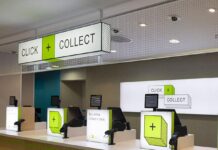It’s fair to say that self-service checkouts are not universally popular with shoppers. Is this because, as shoppers, we much prefer to see a person at the till?
Sometimes, perhaps, but not necessarily. The biggest reason is the irritation we experience when the process doesn’t work smoothly, particularly from the ‘unknown items in the bagging area’.

Many of us have felt this frustration at the grocery store. We choose the self-checkout to avoid the queue, only for a machine to block us, requiring an attendant to intervene and override.
🏆
The 2024 Creative Retail Awards are open for entries.
The Creative Retail Awards are much more than a mere accolade; they represent the pinnacle of achievement in the retail industry. Garnering a nomination or winning one of these awards is a testament to innovation, excellence, and leadership.
www.creativeretailawards.com
A key reason supermarkets introduce these measures is to deter theft, which, sadly, appears to be on the increase. Staff and customer theft (or ‘retail shrink’ as it’s known) grew to $94.5 billion in the US in 2021 – an all-time high, according to the National Retail Federation’s 2022 Security Survey. The majority of this figure, however, comes not from customer shoplifting but organised retail crime, and a further 28.5 per cent from internal and staff theft.
Self-service units can improve shoppers’ checkout experience as they only require part supervision, freeing up staff to do other things. Most supermarkets now have a mix of self-service, assisted service (where the cashier serves the customer and takes the payment) and cashier-based service (where taking payments is the primary role).
Retailers can make considerable gains through automation. Say a grocery store instals four checkout stations at a total cost of £75,000 (including repairs and servicing) that have a shelf life of five years and only require 20% of one person’s wage to supervise them; this still works out vastly cheaper than four members of staff, even if you allow for an element of ‘retail shrink’.
Small wonder, then, that the majority of researchers believe automated checkouts will be a growth category for the next decade;
- “The global self-checkout systems market size is expected to reach USD 10.50 billion by 2030… a CAGR of 13.3 per cent from 2022 to 2030.” (Research and Markets, April 2022)
- “The number of cash automation devices installed at retailers increased by more than 20 per cent between the end of 2019 and 2022 to reach more than 900,000. Between 2022 and 2027, the number of retail cash automation devices installed at retailers worldwide will grow to around 1.3 million.” (RBR, January 2023)
- “The global self-checkout system market is projected to grow from $4.51 billion in 2022 to $12.01 billion by 2029, at a CAGR of 15.0 per cent” (Fortune Business Insights, 2020)
The Covid pandemic saw many retailers upgrade their point-of-sale technology. The requirement for social distancing and a reluctance to handle cash further accelerated retail’s transition to the cashless economy.
This is not a case of people falling out of love with cash, more that when card payments became the norm (and sometimes the only payment option, as is the case with many self-checkouts), we adjust accordingly.
It’s clear that businesses are still committed to cash. And with good reason – consumers still value it. According to a 2022 report from the ECB, 24% of companies prefer cash payments, with just 5% planning to phase it out.
Looking at the UK, a recent Bank of England report says; “Over 5 million adults rely on cash in their day-to-day lives, and cash remains the preferred payment method for 21 per cent of the population…. cash is vital for the 1.2 million people who have limited access to banking services and can be an essential budgeting tool for the 3.8 million in financial difficulty.”
So we should be wary of assuming people no longer want to pay for things in cash, especially in difficult economic times. Our focus, through our range of automated cash-acceptance devices and IoT platform, is on making cash more manageable.
We have developed a portfolio of new compact and customisable devices for retail – designed to meet retailers’ general requirements for a mix of automated, semi-automated and cashier-led checkouts. The new range is secure as employees need not handle cash, removing the risks of theft, whilst our IoT platform tells the retailer how much physical money they have and where.
Self-checkouts are here to stay and can deliver considerable benefits to retailers and shoppers alike – but retailers mustn’t leave cash buyers behind in the pursuit of progress.

















